Suture anchors
1. Principles
The patello-femoral joint is biomechanically very stressed when the knee is loaded. Any compromise of the joint surface is likely to lead to degenerative joint disease. It is, therefore, highly desirable, in patellar fractures to strive for anatomical reduction of the joint surface and stable fixation.
An additional treatment goal is restoration of function of the knee extensor mechanism and allow early range of motion of the knee.
2. Patient preparation and approach
Patient preparation
This procedure is normally performed with the patient in a supine position with the knee flexed 30°.

Approach
For this procedure a mid-axial longitudinal approach is used.
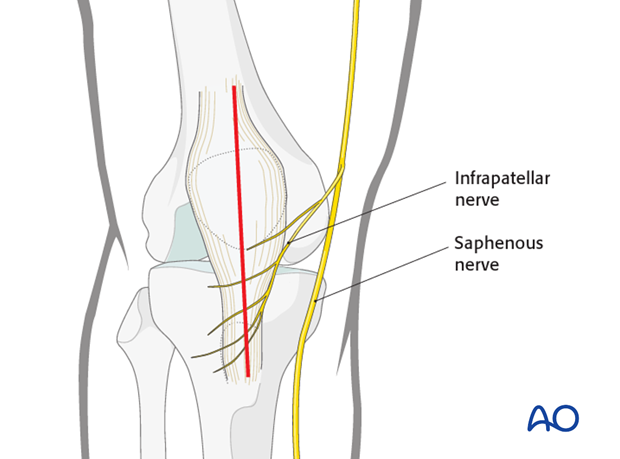
3. Reduction and fixation
Debridement
The knee joint and fracture lines must be irrigated and cleared of blood clot and small debris to allow exact reconstruction.
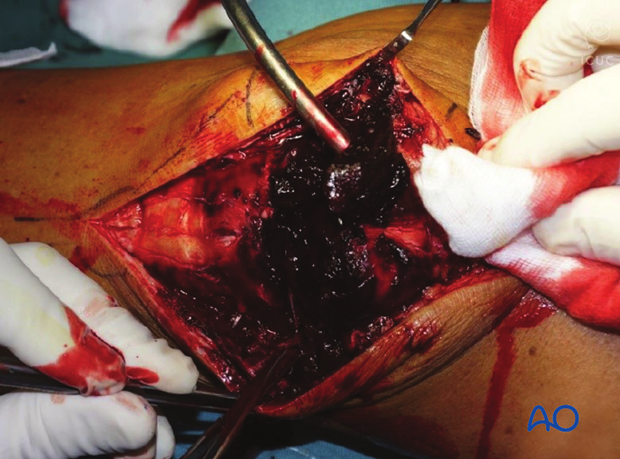
Reduction
The larger fragments are reduced using a pointed reduction forceps or tenaculum.
Sagittal fractures are more easily reduced with the knee flexed.
Reduction is held by one or two reduction forceps.

Verify the reduction by palpation of the retropatellar surface.

Temporary fixation
Two K-wires are inserted through the planned screw trajectory with the fracture reduced
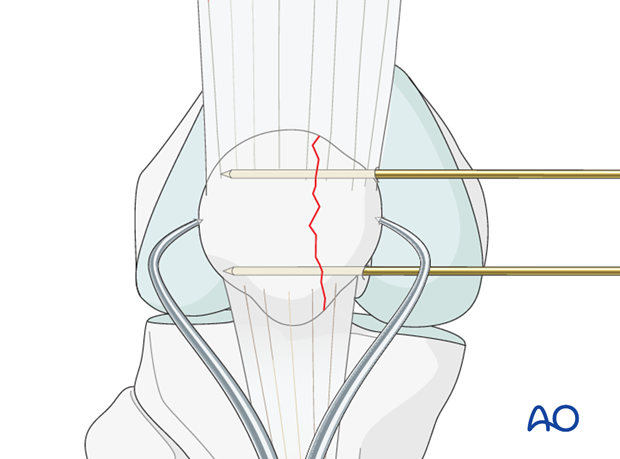
Fixation
Drill holes are made over the K-wires.
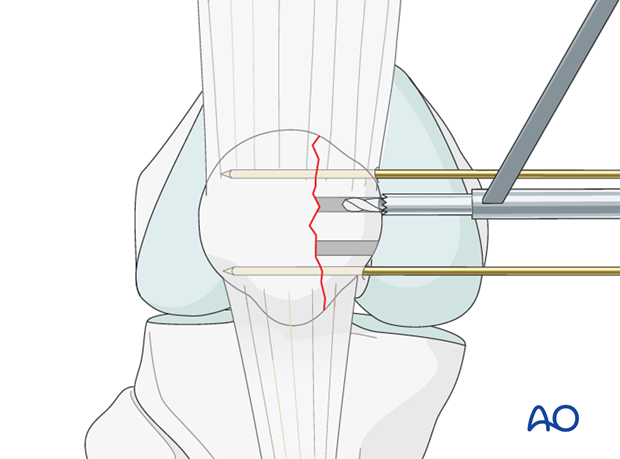
The suture anchor is inserted with a stitch coming out the hole.
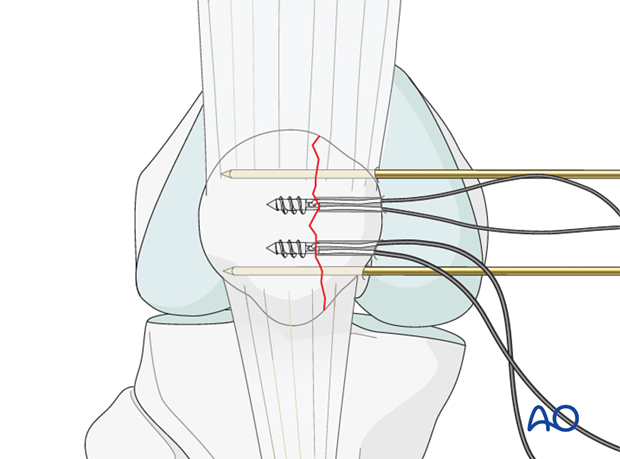
When these anchors are used in pairs, the stitch is tied to its partner to ensure good fixation.
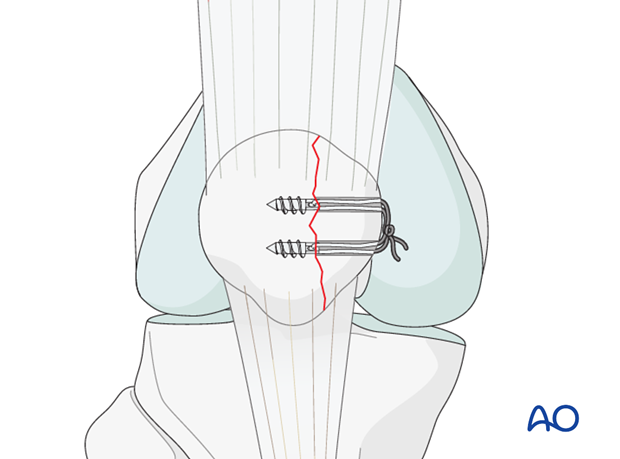
4. Aftercare following suture anchor fixation
Introduction
Active knee function requires an intact knee extensor mechanism, a mobile patella, a well-preserved patello-femoral joint and muscle strength.
As suture anchors are only used in sagittal patellar fractures, and this fracture has now been stabelized with the anchor, the knee may be moved freely without protection postoperatively.
Early controlled range of motion exercises are combined with static quadriceps strengthening exercises. The progressive increase in loading of the patello-femoral joint depends on many factors and requires planned individual programs, designed by the surgeon and physical therapists.
Functional treatment
Patellar fixation is generally quite stable. Early progressive, active mobilization is beneficial after surgery. Static isometric quadriceps exercises should be started on postoperative day 1.
Afterwards, special emphasis should be given on active knee and hip movement.
Weight bearing
A removable knee splint is applied and worn until skin healing at 2 weeks and good quadriceps control is regained. Full weight bearing may be performed with a straight knee, using crutches or a walker, from postoperative day 1.
Follow-up
X-rays should be taken at 2, 6 and 12 weeks. A longer period may be required if fracture healing is delayed.













